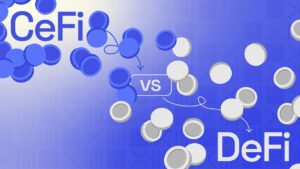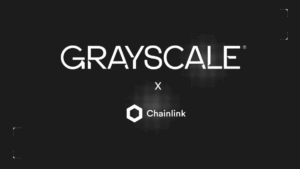In the rapidly evolving world of DeFi, innovation often emerges from rethinking the fundamentals. CoW Protocol is one such breakthrough, an intent-driven trading infrastructure that challenges the limitations of traditional DEXs. Rather than relying on direct execution or static liquidity pools, it introduces a dynamic system where user goals are matched through competitive optimization.
What Is CoW Protocol?

A New Paradigm in Decentralized Trading
CoW Protocol reimagines how users engage with decentralized finance by introducing a system that prioritizes fairness, efficiency, and user protection. Unlike conventional platforms that rely on direct on-chain execution, CoW Protocol enables users to define desired outcomes, which are then optimized through a competitive backend process. This shift marks a fundamental evolution in DeFi architecture, placing user goals at the center of execution.
The Power of Peer-to-Peer Matching
At the heart of CoW Protocol lies the concept of “Coincidence of Wants,” a mechanism that enables direct peer-to-peer trade matching. When two users express opposing trade intents, such as one wanting to buy and the other to sell the same asset, the protocol matches them without relying on external liquidity sources. This not only reduces fees but also enhances execution speed and price fairness, creating a more equitable trading environment.
Solvers and the Competitive Edge
CoW Protocol introduces a unique role: solvers. These independent entities compete to fulfill user intents, driving innovation and ensuring users benefit from competitive pricing. Their presence transforms the protocol into a dynamic marketplace, where strategic optimization is incentivized and user outcomes are continuously refined.
A Meta-Aggregator for Liquidity
Rather than functioning as a standalone exchange, CoW Protocol acts as a meta-aggregator, connecting users to a vast network of trading venues. This expansive reach offers broader market access and improved price discovery. By abstracting the complexity of liquidity sourcing, CoW Protocol empowers users to benefit from a more inclusive and efficient trading ecosystem.
User-Centric Design Philosophy
CoW Protocol’s architecture reflects a deep commitment to user empowerment. Instead of forcing traders to navigate complex routing decisions or manually compare liquidity sources, the protocol abstracts those burdens entirely. Users simply express what they want to achieve, and the system handles the rest, optimizing for price, speed, and security. This frictionless experience lowers the barrier to entry for decentralized trading, making it accessible to both seasoned DeFi participants and newcomers alike.
How Does CoW Protocol Work?

Intent-Based Architecture
CoW Protocol operates on an intent-based trading model, where users submit trade intents rather than executing transactions directly on-chain. These intents describe desired outcomes without specifying the exact path. This abstraction allows solvers to optimize execution by sourcing liquidity and routing trades through the most efficient channels. It also reduces gas costs and slippage, enhancing user experience.
Role of Solvers in Execution
Solvers are independent agents that compete to fulfill user intents. They analyze available liquidity across DEXs, aggregators, and private market makers. By leveraging arbitrage opportunities and routing strategies, solvers aim to deliver the best possible trade outcome. The protocol’s architecture incentivizes solver competition, which drives innovation and ensures users receive optimal pricing and execution.
Batch Auctions and MEV Protection
CoW Protocol uses batch auctions to group multiple trade intents together. This mechanism allows solvers to match trades internally, reducing reliance on external liquidity and minimizing miner extractable value (MEV). By executing trades in batches, the protocol prevents front-running and sandwich attacks, offering users a more secure and transparent trading environment. This design is a key differentiator from traditional DEX models.
Community-Driven Innovation
The protocol is governed by CoW DAO, which utilizes the COW token for voting and participation. While the token plays a role in governance and ecosystem incentives, it is not required for basic trading functionality. Users can interact with the protocol without holding COW, making it accessible and user-friendly. The token’s utility is primarily tied to protocol upgrades, solver incentives, and community-driven decision-making.
What is the COW Token?

Token Overview
The COW token is the native asset of the CoW Protocol ecosystem, designed to align incentives, coordinate participants, and sustain long-term development. As an ERC-20 token, it integrates seamlessly with wallets, dApps, and on-chain infrastructure. Its purpose extends beyond simple transferability; it anchors shared incentives across contributors, partners, and users. This common stake supports reliability, resilience, and the continued evolution of decentralized trading mechanisms.
Utility Within the Ecosystem
COW’s practical roles center on enabling ecosystem programs and participation. It can be used to fund grants, partnerships, and research initiatives that expand integrations and improve user experience. It underwrites campaigns that cultivate liquidity, support audits, and accelerate feature experimentation. For users, holding COW may grant access to curated community programs, early feature pilots, and co-created tooling. For builders, it helps bootstrap alignment, supporting long-horizon work that compounds improvements across interfaces and infrastructure.
Tokenomics and Supply Design
COW’s economic design typically spans several allocation themes: community distributions to seed usage, contributor incentives to reward ongoing work, strategic reserves to support partnerships, and liquidity initiatives to stabilize market access. Emission schedules and unlocks, when present, are generally structured to reduce short-term distortions and favor durable growth. Transparent disclosures and auditable contracts allow independent verification of supply dynamics. Sound tokenomics aim to minimize misaligned behavior and encourage actions that strengthen the protocol’s reliability over time.
Is COW Token a Good Investment?
Evaluating COW requires a thesis beyond price. Consider whether token utility meaningfully ties to real activity, whether ecosystem programs translate into sustained adoption, and whether treasury practices are prudent. Weigh smart contract and operational risks, liquidity depth, and potential regulatory overhang. Examine concentration risks from early allocations or unlocks, plus roadmap execution by core contributors and partners. A disciplined approach favors position sizing, diversification, and ongoing diligence as the ecosystem’s fundamentals evolve.
Conclusion
CoW Protocol represents a meaningful evolution in decentralized trading, one that prioritizes user intent, competitive optimization, and systemic fairness. Its architecture challenges conventional models by abstracting complexity and empowering solvers to deliver optimal outcomes. With a native token designed for long-term alignment and a governance structure rooted in community participation, CoW Protocol offers more than just technical innovation.










